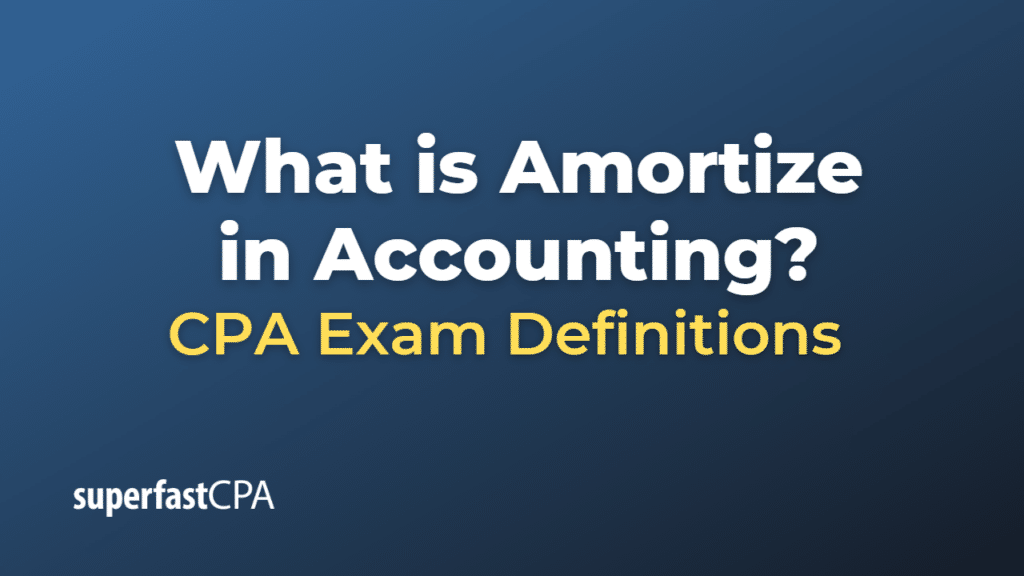Amortize
In accounting, to amortize refers to the process of gradually reducing an asset’s or liability’s value over a specified period of time, typically the asset’s or liability’s useful life or the bond’s maturity period. This process is often used for intangible assets, prepaid expenses, and bond premiums or discounts. The purpose of amortization is to allocate the cost or value of an asset or liability over multiple accounting periods to better match expenses with the revenues they generate.
Amortization can be done using various methods, such as the straight-line method or the effective interest method, depending on the type of asset or liability being amortized.
Example of Amortize
Let’s consider a company that acquires a patent for $100,000 with a useful life of 10 years. The company can amortize the cost of the patent over its useful life using the straight-line method.
Using the straight-line method, the annual amortization expense is calculated as follows:
Annual Amortization Expense = (Patent Cost) / (Useful Life) Annual Amortization Expense = $100,000 / 10 years Annual Amortization Expense = $10,000
So, the company would record an annual amortization expense of $10,000 for the patent over its 10-year useful life. This will reduce the patent’s value on the balance sheet by $10,000 each year, and the company will report an annual expense of $10,000 on its income statement.
At the end of the 10-year period, the patent’s net book value would be zero, as the entire cost of the patent would have been allocated over its useful life. This systematic allocation of the patent’s cost over multiple accounting periods helps to match the expenses related to the patent with the revenues generated from it, providing a more accurate representation of the company’s financial performance.













